The Knights of La Garde-Guerin |
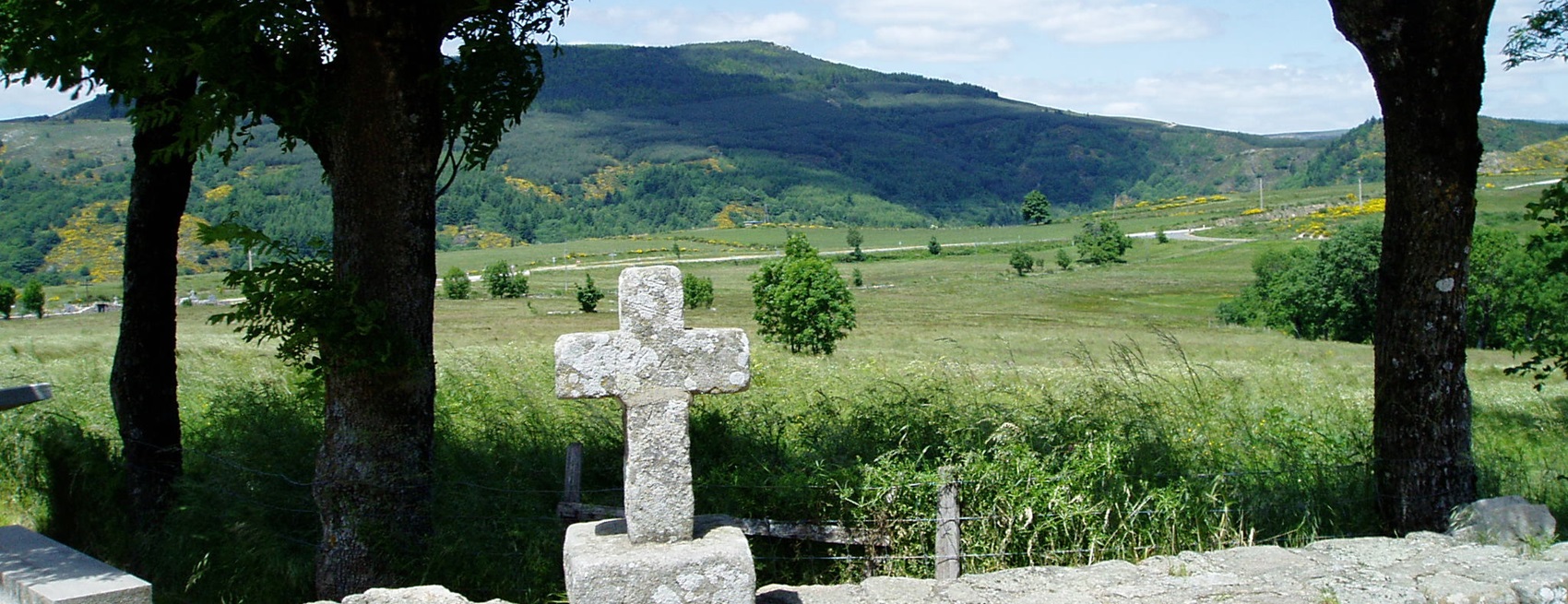
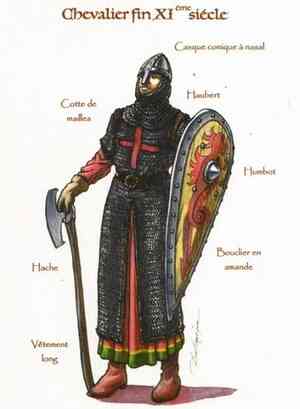 A sort of road police was established in the 11th century, perhaps even earlier, at La Garde-Guerin. The inhabitants of La Garde maintained a strong garrison and were responsible for guiding and protecting travelers and goods on the GR®700 Regordane Way, which they maintained. In return, they collected tolls. Each of them owned their home or stronghold, dominated by the proud silhouette of the still standing square tower.
A sort of road police was established in the 11th century, perhaps even earlier, at La Garde-Guerin. The inhabitants of La Garde maintained a strong garrison and were responsible for guiding and protecting travelers and goods on the GR®700 Regordane Way, which they maintained. In return, they collected tolls. Each of them owned their home or stronghold, dominated by the proud silhouette of the still standing square tower.
It is known that they formed an economic and military community and lived in a sort of co-lordship. In southern regions, as Georges Duby writes, "the power relationships are founded, in the Roman manner, on the contract, the 'Convenentia' in Latin, on the agreements made between free men in respect of the law." It can be thought that at La Garde-Guerin, a regime of co-lordship, which we still poorly understand today, had been established.
 Every traveler has a right to the road
Every traveler has a right to the road
The organization of this community, under the impetus of the lords of Tournel, may not have had its equal in France. They founded it in the spirit of the Chivalric Schools, flourishing from the 12th century. There were about ten Chivalric Schools in France, mentioned in important documents of the Royalty. That of La Garde-Guerin was founded as such. The lords of Tournel wanted to abolish feudalism as it existed at La Garde-Guerin before them and install "pariers" knights - that is, "equals" - ("par" in Latin means "equal"), equal in rights, equal in duties. They shared the lordship of the castle and the lordship, significant revenues, and well-defined charges. Each parier owned a parerie or a part of the castle and its territory.
Little was written at that time, and the first text mentioning the inhabitants of La Garde-Guerin is found in a curious manuscript known as the "Book of Saint-Privat." It is written in Latin, in the hand of the bishop, Aldebert III of Tournel, nicknamed the Venerable. Aldebert III was elected between 1150 and 1158 and died in 1187, imprisoned by one of his brothers, a bastard, and locked up in the castle of Chapieu, which the said bishop had built to defend the city of Mende. This text was translated and commented upon by Abbot Roux, curate of Vialas.
"In the diocese of Mende, near the public road called Regordane, there is a castle called La Garde, which was always not a castle but a cave. Indeed, brigands lived there and frequently undertook expeditions, robbing travelers of their goods, injuring them, leaving them half-dead and very often killing them. Every day, rapine, theft, homicides, and other crimes were committed there." The neighboring bishops, and especially the Bishop of Mende, who was responsible for this, attacked this evil lair without being able to completely abolish the entrenched bad customs. Bishop Aldebert, knowing this verse: "Every traveler has a right to the road everywhere," put the final hand to the repression of this scourge.
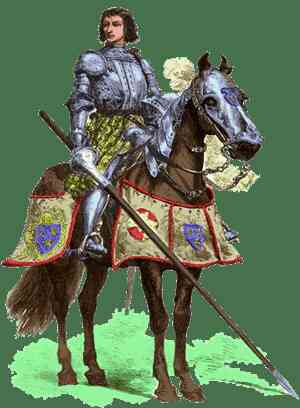 The castle was threatened not only by ecclesiastical censure but also by arms. The terrified inhabitants came on the appointed day for "satisfaction," coming to Mende to throw themselves at the bishop's feet, not only the knights and their sons, but even young and old serfs. In the presence of the whole people, they abandoned their bad acquisitions and customs, and then all swore, on the Holy Gospels, that henceforth they would demand nothing from travelers using this road, that they would do them no violence, nor cause them any vexation. After accepting penance for the past, they withdrew.
The castle was threatened not only by ecclesiastical censure but also by arms. The terrified inhabitants came on the appointed day for "satisfaction," coming to Mende to throw themselves at the bishop's feet, not only the knights and their sons, but even young and old serfs. In the presence of the whole people, they abandoned their bad acquisitions and customs, and then all swore, on the Holy Gospels, that henceforth they would demand nothing from travelers using this road, that they would do them no violence, nor cause them any vexation. After accepting penance for the past, they withdrew.
Aldebert III spent most of his episcopate fighting against the lords to consolidate the temporal power of the bishops of Mende, still shaky. The Count of Barcelona to the southwest of the cathedral, the Lord of Canilhac to the west, the Lord of Cabrieres to the west, the Lord of Dolan to the south, had built fortified dwellings and threatened the supremacy of the papacy. He even claimed the right, contested by others, to suzerainty over the silver mines of the land. He forced the castle lords of Plagniol to return a village he had taken from the hospital of Mende. He put Ricard de Peyre in order.
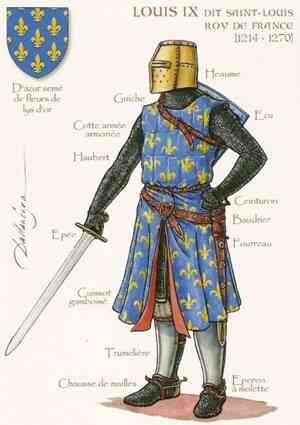 The protection of the King of France
The protection of the King of France
Frustrated by this life of repression, he went in 1166 to the court of King Louis VII of France and for the first time paid homage for his diocese, in exchange for royal protection. This famous act was designated by the name "Golden Bull." Naturally, all the feudal lords of the region rebelled against this pact, which, by making the king the supreme lord of Gevaudan, threatened them with a more difficult guardianship to shake off than that of the local bishops. They sparked troubles that lasted until about 1170.
In light of all these events, should we take Aldebert's account at face value? Does the bishop not want to justify his position? Are the brigands of La Garde as black as stated in the text?
As always, in such cases, we must distinguish things. The "knights" were certainly not bandits, let alone saints, but rather formidable figures occupying a leading fortress, placed in a good location near the Regordane. Following his victory, Aldebert III seized a number of pareries and gave these lords a status that we do not know, due to a lack of written documents. Let us recall that at the time, all power was mainly expressed through words and gestures. Later, in 1238, in a text written in Latin, "Additions to the Statutes of Bishop Etienne" by Raymond Atger, official of the said bishop, we can read: "As Etienne, bishop of Mende, the principal lord of the castle of La Garde, had come to this castle for his affairs, the knights and pariers of the castle presented themselves before him and therefore requested, because disputes often arose between them regarding the customs of the castle, to have the rules that he deemed should be observed in the future in contentious cases put into writing".
For a long time, the income sources of the pariers mainly came from their toll rights, guiding, back-guiding on the Regordane Way, and cartalage on the common land. The toll was owed by passersby, their beasts, and their goods, originally intended for road maintenance. Guiding and back-guiding were collected for the protection of merchants and their convoys. Cartalage was paid by the farmers of the common land for the measurement of grains. Each parier owned a portion or parerie of the castle and its territory, and the revenues were shared proportionally based on the number of pareries they owned and according to each one's actual role in monitoring the road, that is to say, the time spent at the castle. As the number of community members increased, the revenues, originally sufficient, no longer matched the burdens involved in maintaining the road and police service. Quarrels broke out among them. Inheritance issues became increasingly complex... some families left La Garde-Guerin and made way for newcomers... The co-lordship was threatened with fragmentation. The bishops promulgated regulations intended to stop the dismemberment of the fief and, in general, to define the rights of each parier within the community.
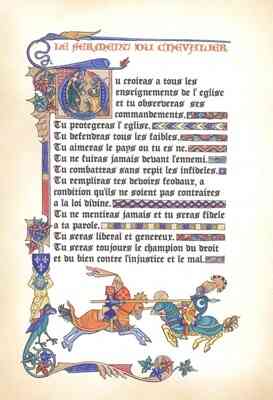 Parier from the age of 16
Parier from the age of 16
The statutes of Bishop Odilon de Mercoeur in 1260 define perhaps one of the most original road institutions of the Middle Ages. To prevent excessive dismemberment, the number of "pareries" or portions of a parier is limited. Each will remain indivisible and revert to a single heir. In principle, the parier must be capable of bearing arms and ensuring the policing of the road. When the father can no longer serve, he resigns in favor of his son, the eldest preferably. The latter then - and only among his brothers - ceases to be a damoiseau. He receives the knighthood and becomes a knight. A knight can be a parier from the age of 16, as he is of age at 16 and not at 20 for the damoiseaux. He fully participates in the charges and revenues. A daughter inherits the parerie only if she has a husband capable of replacing her to bear arms. The parerie is alienated by a sale act, accompanied by the investiture of the bishop who retains the right to "withhold this parerie". The knight pariers (there were 31 in 1258) elected four of their own who, in their name and on behalf of all the pariers, agreed with the bishop to restore peace or amend the existing statutes. These four knights represent the four families of the castle: the Gaucelme, Erailh, Bertrand, and Gaule (or Gal). It was a matter for these "powerful" barons and bishops to control this cumbersome "power" in peacetime to better neutralize each other in a muted or violent confrontation for centuries.
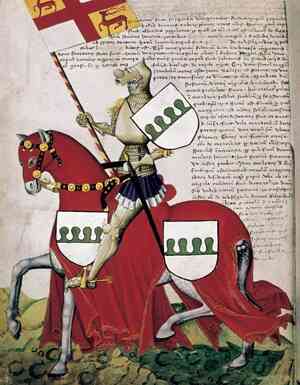 A precise ceremony
A precise ceremony
On December 2, 1292, at the request of Guillaume de Montesquieu, bailli of the bishop, the pariers handed over the castle to him. In fact, the castle had to be returned at each election of bishops, in times of war and whenever the circumstances and necessity required it. The prelate's delegate, after receiving the keys, closes and opens the doors and takes possession. Then he has the banner of Saint-Privat displayed on the tower. A herald, placed next to the episcopal standard, cries aloud and repeatedly: Saint-Privat for Monseigneur the bishop of Mende! Saint-Privat for Monseigneur the bishop of Mende! Saint-Privat! God wills it! Deus o vol! After this, the representative of the bishop hands the keys of the castle to the consuls and withdraws.
In 1307, a treaty of pareage was concluded between Philippe le Bel and the bishop of Mende. This act further entrenched the authority of the King of France in Gevaudan and the Count-bishop of Gevaudan affirmed his suzerainty over La Garde-Guerin. The statutes of 1310 brought profound changes. A common court for the king and the bishop was established and from now on, thanks to the fear of its decisions and the progress of manners, order reigned in Gevaudan. It can be assumed that the community of pariers was no longer a necessary organ for public tranquility and that it lost its military and police character, already diminished, that it had at the outset. It no longer exercised the police service it used to have and no longer collected the rights that were attached to it.
From then on, it is understandable that, in the statutes of 1310, all the old provisions disappeared, as they mainly aimed to ensure the functioning of this service. The community lost its privileges and ceased to be what it had been. The bishops of Mende increasingly secured their preponderance in the community. They managed to hold a great number of pareries, to gradually evict the barons of Tournel who had been the original direct suzerains of the pariers, and to dominate the community. Association G.A.R.D.E, La Garde-Guerin, 48800 Villefort
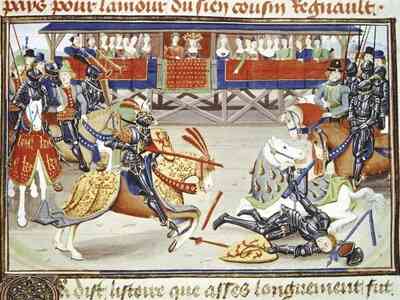 Let me tell you the story of the Chevaliers Pariers of La Garde-Guerin in Lozere.
Let me tell you the story of the Chevaliers Pariers of La Garde-Guerin in Lozere.
In the 11th century, in La Garde-Guerin, a village located in the Occitanie region, a kind of road police was in place. The inhabitants of La Garde were responsible for guiding and protecting travelers and their goods on the GR®700 Regordane Way, an ancient communication route. In exchange for these services, they collected toll rights. Each inhabitant owned their own stronghold, and the imposing silhouette of the square tower still bears witness to this era.
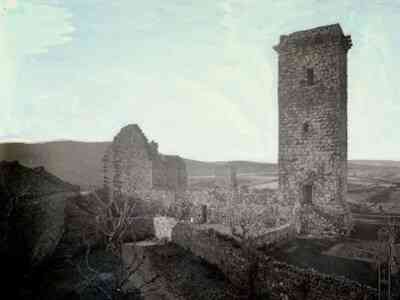 But what makes the Chevaliers Pariers of La Garde-Guerin so fascinating is their unique organization. Under the influence of the Lords of Tournel, they created an economic and military community, inspired by the flourishing Chivalric Schools in the 12th century. Unlike traditional feudalism, the Chevaliers Pariers were equals in rights and duties. They shared the lordship of the castle and the châtellenie, as well as the associated revenues and burdens. Each knight owned a share of the castle and its territory.
But what makes the Chevaliers Pariers of La Garde-Guerin so fascinating is their unique organization. Under the influence of the Lords of Tournel, they created an economic and military community, inspired by the flourishing Chivalric Schools in the 12th century. Unlike traditional feudalism, the Chevaliers Pariers were equals in rights and duties. They shared the lordship of the castle and the châtellenie, as well as the associated revenues and burdens. Each knight owned a share of the castle and its territory.
The first text mentioning the inhabitants of La Garde-Guerin is found in a manuscript called the "Book of Saint-Privat," written in Latin by Bishop Aldebert III of Tournel. This text describes La Garde-Guerin as a den of brigands who attacked travelers, committing plunder, thefts, and even homicides. The Lords of Tournel thus founded this community of Chevaliers Pariers to put an end to these bad customs.
Thus, in La Garde-Guerin, these Chevaliers Pariers left their mark in history, protecting travelers on the road of the Regordane. The keep, standing 27 meters tall, still testifies today to their presence and commitment. If you stroll through this picturesque region of Lozere, do not hesitate to imagine these valiant Chevaliers Pariers watching over travelers, guiding their steps and defending everyone's safety.
Former holiday hotel with a garden along the Allier, L'Etoile Guest House is located in La Bastide-Puylaurent between Lozere, Ardeche, and the Cevennes in the mountains of Southern France. At the crossroads of GR®7, GR®70 Stevenson Path, GR®72, GR®700 Regordane Way, GR®470 Allier River springs and gorges, GRP® Cevenol, Ardechoise Mountains, Margeride. Numerous loop trails for hiking and one-day biking excursions. Ideal for a relaxing and hiking getaway.
Copyright©etoile.fr